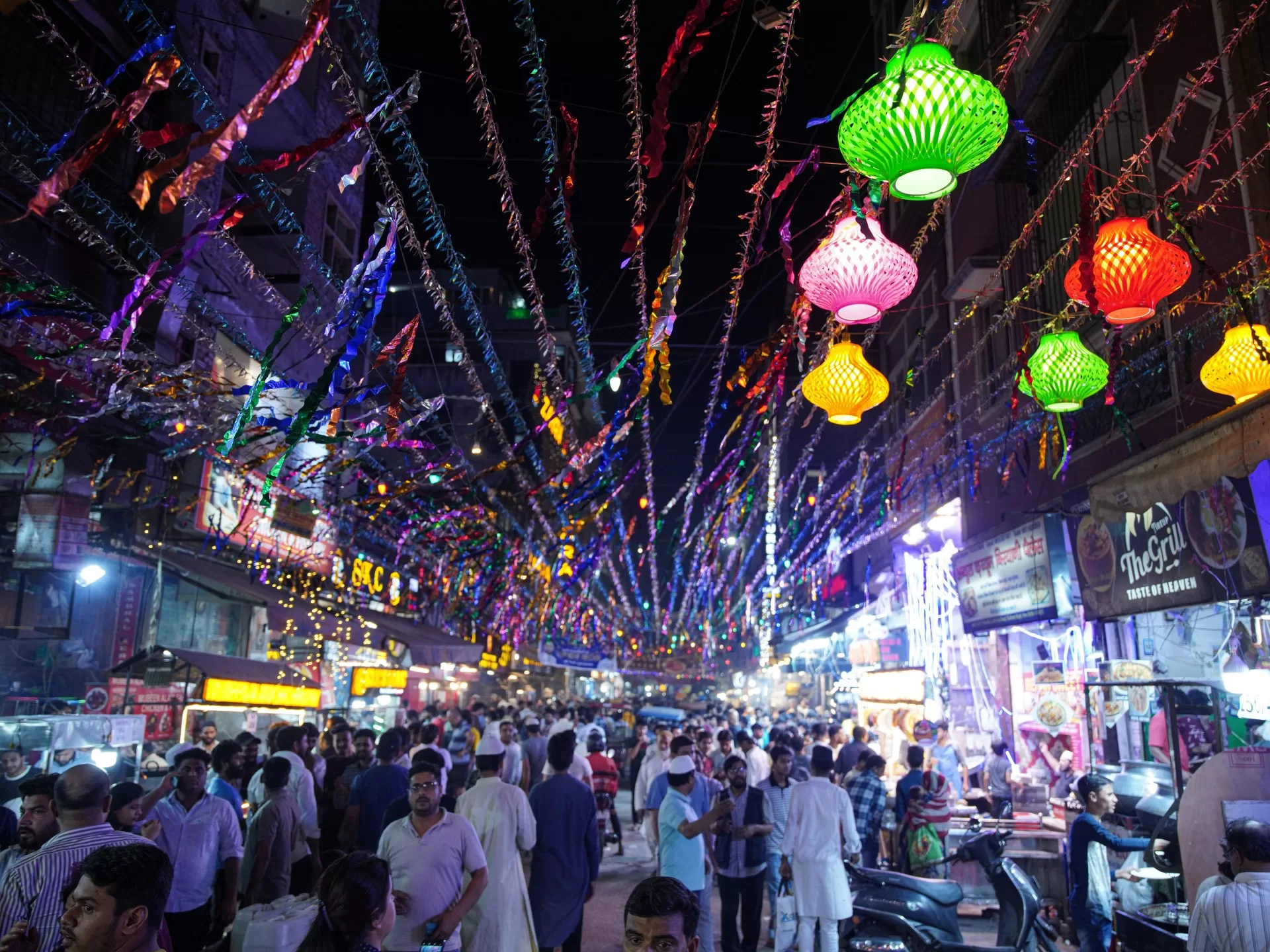The market area is crowded with people who have come here for iftar, to break their fast during the holy month of Ramadan. The hustle and bustle lasts throughout the night until people do their suhoor, the pre-dawn meal that Muslims have before starting their fast.
Shaheen Bagh, a working-class Muslim neighbourhood in southeast Delhi, made global headlines in the winter of 2019-20 when its residents, mainly women, occupied a highway near the neighbourhood that connects the capital city to the satellite city of Noida.
The sit-in protested against the Citizenship Amendment Act (CAA), a law passed by the Indian government in December 2019 – and implemented last month – with the aim of fast-tracking the naturalisation of non-Muslim refugees from three neighbouring countries. Protesters demanded the revocation of the law, which they said discriminates against Muslims and violates the principle of secularism enshrined in the Indian constitution.
The occupation, which lasted more than three months and inspired a wave of mass protests against the Hindu nationalist government of Prime Minister Narendra Modi across the country, was ended in March 2020 by the coronavirus pandemic.
But the landmark protest left the neighbourhood its name. And a new reputation for tasty street food.
Chaalis Futta Road, which runs parallel to the New Delhi-Noida highway, was once a collection of shops, car repair stores and a few restaurants and tea stalls.
“During the protest, we used to sit for hours at these tea stalls and discuss politics,” Sanaullah Akbar, a 27-year-old resident who regularly attended the occupation, told Al Jazeera. “It was around that time that cafés and biryani stalls started coming up. People from different parts of the city would come here to participate in the sit-in, and then they would go to these eateries for tea and coffee.”
Food became a way to bring people together – through cups of tea, locally made biryani and simple home-cooked meals, explained Tanushree Bhasin, a Delhi-based writer.
“People who had never visited Shaheen Bagh sat with locals and broke bread together, transforming these chance meetings into intimate connections full of radical potential,” she said. “After the protest ended, people still come to Shaheen Bagh looking not just for the same delicious food but also for a sense of community and connection.”
Reels posted to Instagram and YouTube have further popularised the market. The street has become a main attraction for foodies, serving traditional Mughlai dishes as well as Arab, Afghan, Turkish and Italian food.
People used to visit streets around the historical Jama Masjid in the old part of Delhi for their iftar. However, “the protests highlighted Shaheen Bagh,” says Mohammad Danish, 23, owner of House of Delhicious (HOD), one of the oldest restaurants in the area. “Everyone got to know about this area and slowly the food market emerged here over the last four years.”
New Delhi’s well-known Mughlai food eateries, including Javed Famous Nihari, Zehra Biryani, Aslam Butter Chicken, Karim’s and Qureshi Kabab, have opened here in the last three years.
“We opened our shop here because it is an emerging food market,” says 42-year-old Arshad Jamal, who owns the Qureshi Kabab. He adds that business is “doing well”.
